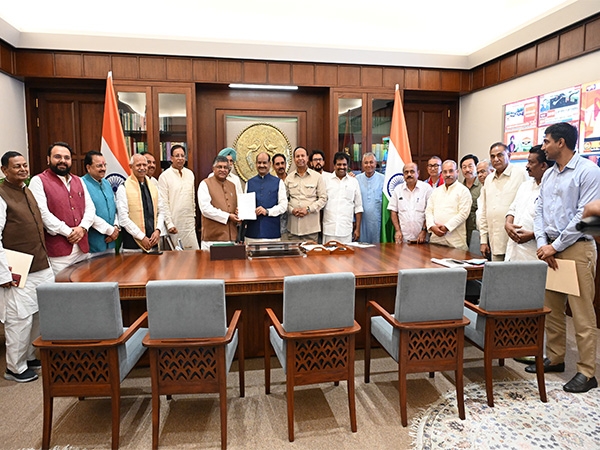A new challenge rears its head in Mizoram as 1,200 refugees march in from Myanmar

While the government remains occupied with how to repatriate the Rohingya refugee population, over 1,200 more Myanmarese citizens have crossed over to border villages in Mizoram fearing more clashes between the Arakan Army, an insurgent group, and the Tatmadaw, the Myanmarese military.
Beside forcing people to seek refuge in India, experts are worried about the recent clashes as they could lead to further delays in the important Kaladan Multimodal Project - which is at the heart of Act East policy.
The new inflow
Local officials in Lawngtlai District in South Mizoram, on the border with Myanmar, told Catch how these refugees - mostly Bru and tribes, as the Rakhine people are called locally - have been settling in four villages.
“They have come to Zochachhuah and three other villages close to the border with Myanmar,” says T Arun, Deputy Commissioner of the Lawngtlai district, which is at the centre of this new refugee challenge. Around 420 refugees have settled in Zochachhuah, 500 in Laitlang, 120 in Dumzautlang and 200 in Hmawngchhuah villages close to the border, officials say.
Zochachhuah, interestingly, is also the village where Kaladan Multi Modal Transport Project enters India. It is at one end of the 90-kilometre stretch of the NH 502A which connects Lawngtlai town and India-Myanmar border. Another 140 kilometres of highway is needed to connect Zochachhuah to Paletwa, where India has built an inland waterways port.
The strategically important Lawngtlai district shares the border with Myanmar and Bangladesh. “Beside the national security dimension, this new inflow also creates a challenge on humanitarian grounds,” Arun says.
Arun visited the villages with other senior officials on Tuesday. The local officials say they have dispatched essential food items like rice to feed this new population and deputed two doctors beside other health workers to the remote villages. “We have to ensure there is no burden on the local resources,” Arun says.
Assam Rifles personnel, too, are keeping a close watch on the border, officials say.
According to another district official who wished to remain anonymous, the refugees crossed over till at least Saturday. The border region largely has a one third population of people with a Arakanese background who are followers of Buddhism and Christianity. While few of them have relatives on border villages, others are living in community halls and school buildings, the local officials say. “The people know each other really well on both sides,” the official says.
This is not the first time this year that people have crossed over from Chin State in Myanmar. In May, the neighbouring Saiha district saw around 340 people crossing over. They were subsequently repatriated. The state, interestingly, has not seen a lot of movement of the Rohingya, who are mostly coming to India via Bangladesh even though Rakhine, the state to which most Rohingya belong shares a border with the Chin state and is not very from the border with India.
Festering conflicts
While the global focus remains on the attacks by the ARSA, a Rohingya outfit, and the subsequent Tatmadaw crackdown leading to a humanitarian catastrophe which has left over half a million people displaced and forced to leave to Bangladesh recently, other festering conflicts have escaped the attention.
The exodus of this more than 1,200 people started subsequent to the military crackdown post an early November attack on the Tatmadaw which was claimed by AA. According to reports in the Burmese media, as many as 11 Army personnel had died when the boats they were travelling in on the Kaladan river, were ambushed by AA in Paletwa on the border of Chin and Rakhine states.
Arakan Army, said to be the smallest of the ethnic armed organisations fighting the Centre, operates in Kachin, Northern Shan States, Chin and Rakhine, where most of its cadres hail from. It is part of the Northern Alliance, which includes the Kachin Independence Army.
AA, interestingly, started operating in Paletwa and other districts in neighbouring Rakhine only in late 2015, according to reports. Three of the AA cadres were arrested in Lwangtlai in October. All of them have been booked under the Foreigners Act. Two of them are said to be in a hospital, one in Lwangtlai, while the other one is in Aizawl, officials say.
Meanwhile, experts say this new development of the AA operating in Chin around Paletwa is unfortunate and may cause further delays in the Kaladan Multi Modal Transport project. While the inland waterways terminal at Paletwa is complete, the road construction of the 109-kilometre stretch connecting the inland waterways port to India-Myanmar border is yet to commence.
The construction of the road for which the contracts have been awarded is expected to take three to four years because of the narrow window of construction work every year.
Experts say these clashes could pose a challenge to the construction activities. Moreover, as one expert said, it could lead to further securitisation of the project.
First published: 29 November 2017, 22:38 IST




![BJP's Kapil Mishra recreates Shankar Mahadevan’s ‘Breathless’ song to highlight Delhi pollution [WATCH] BJP's Kapil Mishra recreates Shankar Mahadevan’s ‘Breathless’ song to highlight Delhi pollution [WATCH]](https://images.catchnews.com/upload/2022/11/03/kapil-mishra_240884_300x172.png)

![Anupam Kher shares pictures of his toned body on 67th birthday [MUST SEE] Anupam Kher shares pictures of his toned body on 67th birthday [MUST SEE]](https://images.catchnews.com/upload/2022/03/07/Anupam_kher_231145_300x172.jpg)






